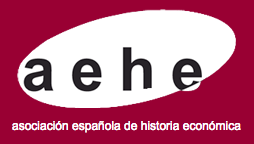Marketing strategies for maximising of profits among large transhumant stockbreeders in Castile in the xvi century
DOI:
https://doi.org/10.1016/j.ihe.2013.05.003Keywords:
Castile, Sixteenth century, Transhumant stockbreeding, Wool trade, N530Abstract
A contribution to the study of the organization of the wool trade in the Crown of Castile during the Modern Age is presented, focusing on the case of the region of Soria during the sixteenth century, and on the group of the large transhumant stockbreeders. The author identifies the main characteristics of the strategies put into practice by the members of this group in order to sell their wools: Prolonged deferment of payment by the merchant buyers, and storage of wool for several years in order to accumulate a larger quantity. It shows that this strategy allowed them to obtain higher prices for their merchandise, that the merchants were sometimes denounced as usurious. The high prices obtained also generated uneasiness among the stockbreeders, who feared they might have committed the sin of usury.Downloads
Downloads
How to Cite
Issue
Section
License
Aquellos autores/as que tengan publicaciones con esta revista, aceptan los términos siguientes
- Los autores/as conservarán sus derechos de autor y garantizarán a la revista el derecho de primera publicación de su obra, el cuál estará simultáneamente sujeto a la Licencia de reconocimiento de Creative Commons Reconocimiento-No comercial-Sin obra derivada 4.0 Internacional que permite a terceros compartir la obra siempre que se indique su autor y su primera publicación esta revista, y no permite hacer uso comercial de la misma ni tampoco obras derivadas.
- Los autores/as podrán adoptar otros acuerdos de licencia no exclusiva de distribución de la versión de la obra publicada (p. ej.: depositarla en un archivo telemático institucional o publicarla en un volumen monográfico) siempre que se indique la publicación inicial en esta revista.
Plagio y fraude científico
La publicación de un trabajo que atente contra los derechos de propiedad intelectual será responsabilidad de los autores/as, que serán los que asuman los conflictos que pudieran tener lugar por razones de derechos de autor. Los conflictos más importantes pueden darse por la comisión de plagios y fraudes científicos.
Se entiende por plagio:
- Presentar el trabajo ajeno como propio.
- Adoptar palabras o ideas de otros autores sin el debido reconocimiento.
- No emplear las comillas u otro formato distintivo en una cita literal.
- Dar información incorrecta sobre la verdadera fuente de una cita.
- El parafraseo de una fuente sin mencionar la fuente.
- El parafraseo abusivo, incluso si se menciona la fuente.
Las prácticas constitutivas de fraude científico son las siguientes:
- Fabricación, falsificación u omisión de datos y plagio.
- Publicación duplicada.
- Conflictos de autoría.





